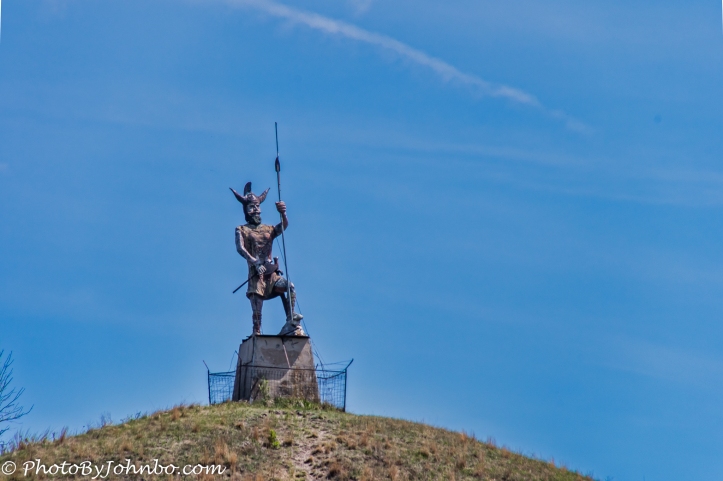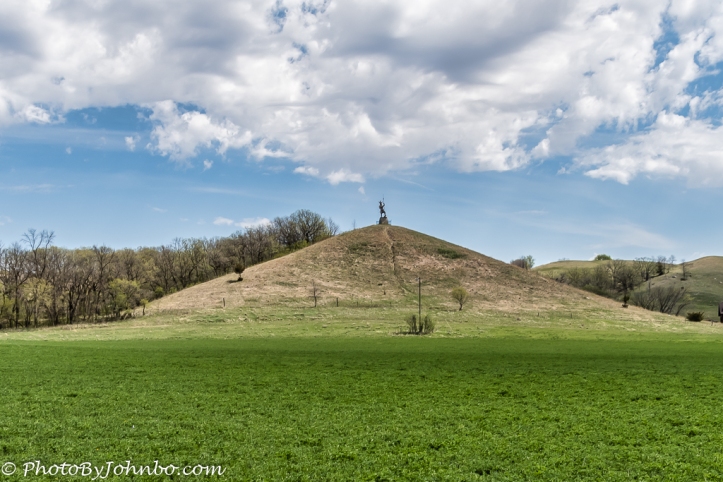Just outside the small town of Fort Ransom, North Dakota is a unique hill. The town of some 75 or so residents is situated near a hill that is almost (but not quite) a perfect pyramid. Geologists believe the hill, like many others in the region, is the result of glacial action and erosion. However, it is not strewn with boulders or rocks, something unique compared to the other glacial hills throughout the region. Many locals believe the pyramid is a Native American burial pyramid about 100 feet (30 m) tall and 5000 years or greater years old. As of this writing, you can take your pick on what you believe. The link here features a video of the controversy and of the discovery of a stone with ancient markings that resemble a musical scale merged with a primitive “Morse Code.” The code has never been deciphered, so it adds to the mystery of Pyramid Hill.
In 1972, William Warll of Casselton, North Dakota created a large Viking statue. Known as the Black Viking, it stands some 25 feet (7.6 m), above the summit of Pyramid Hill. Made of wire mesh, heavy fiber tape, and painted black, the statue is identified as one of the attractions on the Sheyenne River Valley National Scenic Byway.
 Due to the pyramid shape of the hill, the climb is steep, but it is possible to climb to the top for a closer look. The hill is just north of the town on Sorby Hill Road. A placard marks the site in a similar fashion to the other attractions on the scenic byway. More details on the Black Viking Statue can be found here.
Due to the pyramid shape of the hill, the climb is steep, but it is possible to climb to the top for a closer look. The hill is just north of the town on Sorby Hill Road. A placard marks the site in a similar fashion to the other attractions on the scenic byway. More details on the Black Viking Statue can be found here.
John Steiner

